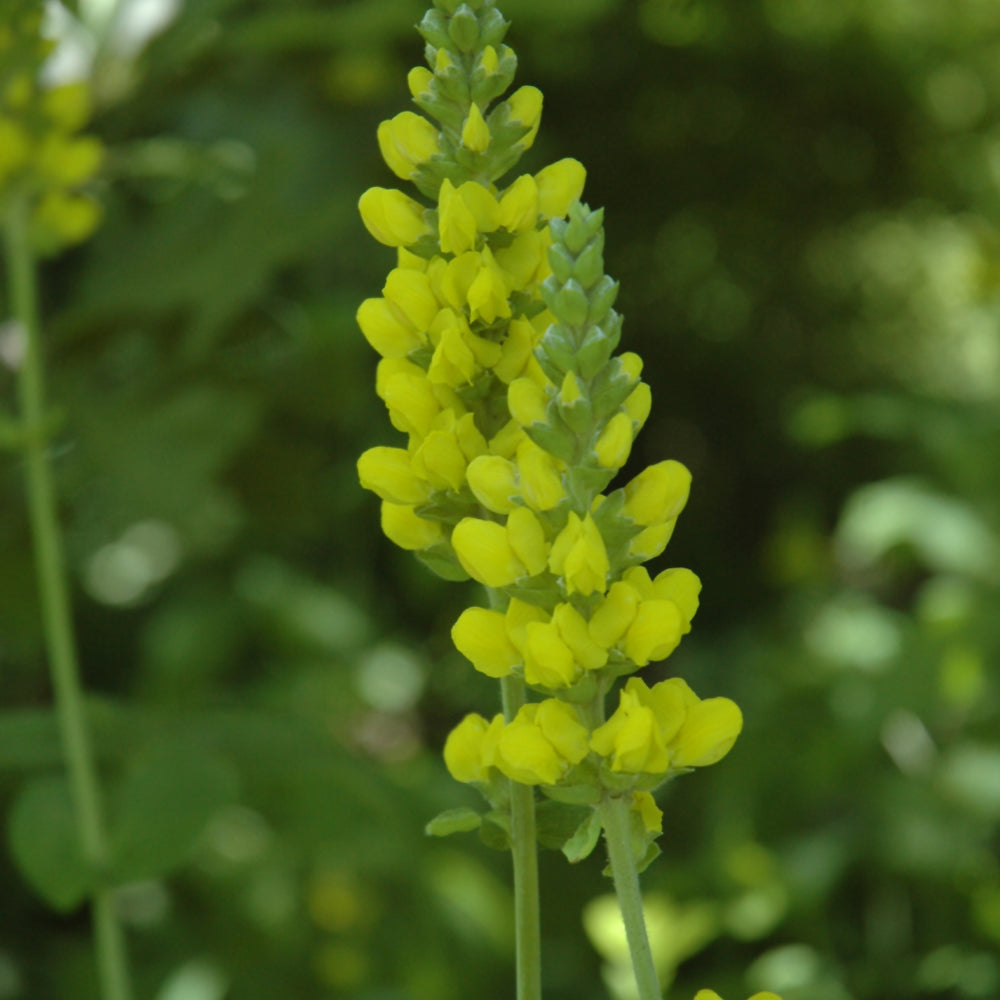Carolina Bushpea
Carolina Bushpea
|
|
Shipping for other products is calculated at checkout.
Couldn't load pickup availability
Botanic Name: Thermopsis villosa
Description: A striking variety with attractive foliage producing large lupine-like flower spikes that tower over the plant; very adaptable to rich garden soils; water during drought conditions
Landscaping Attributes
Landscaping Attributes
Carolina Bushpea is an herbaceous perennial with an upright spreading habit of growth. Its medium texture blends into the garden, but can always be balanced by a couple of finer or coarser plants for an effective composition.
This is a relatively low maintenance plant, and should only be pruned after flowering to avoid removing any of the current season's flowers. It has no significant negative characteristics.
Carolina Bushpea is recommended for the following landscape applications;
Mass Planting, General Garden Use
Ornamental Features
Ornamental Features
Carolina Bushpea has masses of beautiful spikes of lemon yellow pea-like flowers rising above the foliage from mid spring to early summer, which are most effective when planted in groupings. The flowers are excellent for cutting. Its oval compound leaves remain green in color throughout the season.
Planting & Growing Tips
Planting & Growing Tips
Carolina Bushpea will grow to be about 4 feet tall at maturity, with a spread of 3 feet. When grown in masses or used as a bedding plant, individual plants should be spaced approximately 30 inches apart. It grows at a medium rate, and under ideal conditions can be expected to live for approximately 10 years. As an herbaceous perennial, this plant will usually die back to the crown each winter, and will regrow from the base each spring. Be careful not to disturb the crown in late winter when it may not be readily seen! As this plant tends to go dormant in summer, it is best interplanted with late-season bloomers to hide the dying foliage.
This plant does best in full sun to partial shade. It is very adaptable to both dry and moist growing conditions, but will not tolerate any standing water. It is particular about its soil conditions, with a strong preference for sandy, alkaline soils. It is somewhat tolerant of urban pollution. This species is native to parts of North America.
More Info...
More Info...
Hardiness Zone: 3
Sunlight: Full Sun To Partial Shade
Height: 5 feet
Spread: 3 feet
Photo Credits: NetPS Plant Finder


